I’m cooking Thanksgiving dinner for the first time in years. And of course, I intend to give ‘ol Martha a run for her money. 🤨. That means I need to be more serious and discerning about the main ingredient of the most popular and best dishes – the potatoes.
Until a few years ago (when I originally wrote this story for the P+V newspaper), I was of the mindset that there were two types of potato – sweet and not-sweet.
And they were white or orange.
What else mattered?
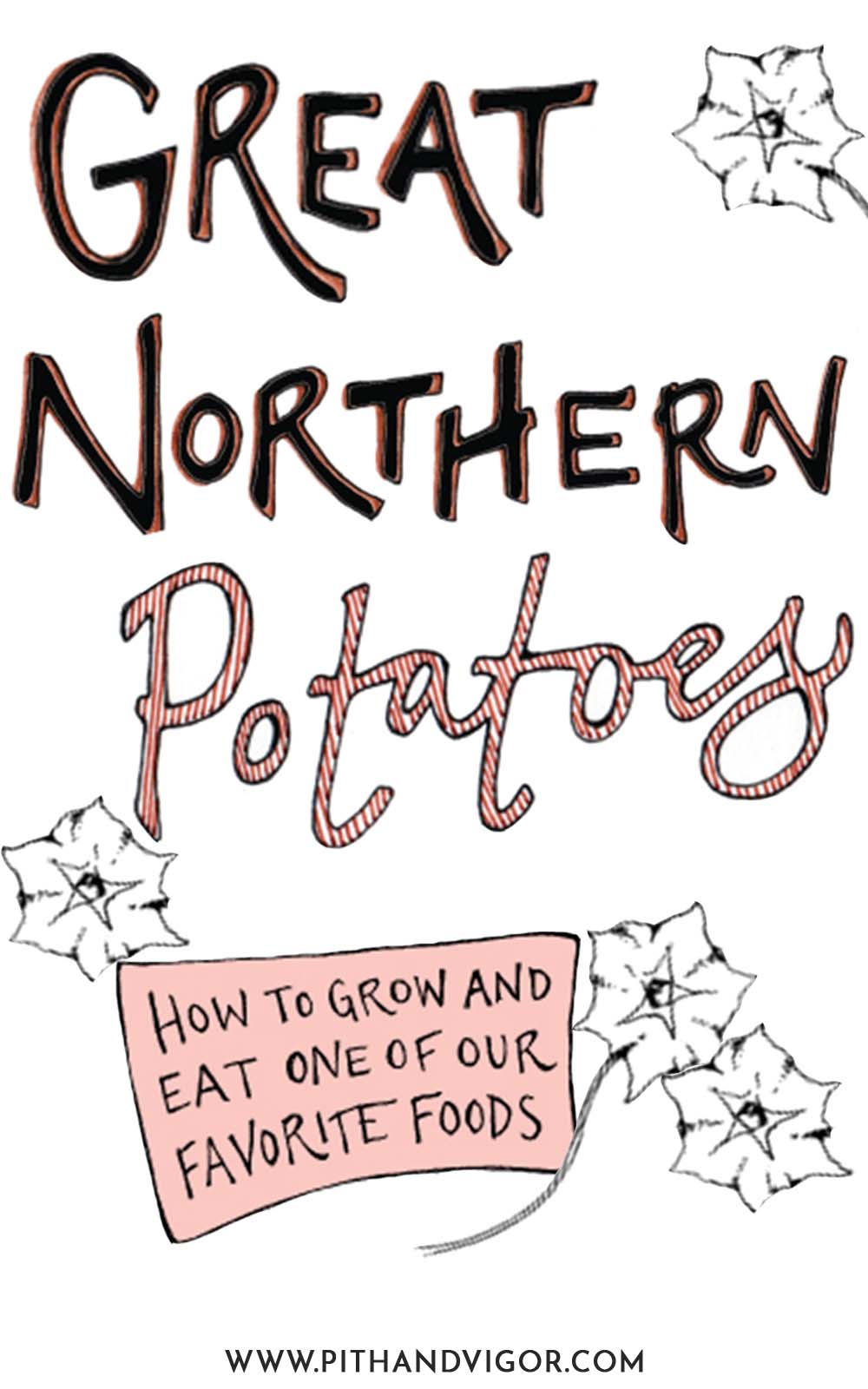
At the time, my grocery store choice was as limited as my knowledge, and I never thought more about it.
That is until I read about a potato ‘faire’ somewhere in England where gardeners wandered from tent to tent in Barbour jackets and wellies with charming paper-wrapped packages of exotic seed tubers tucked under their arms.
I’m always wondering why we (Americans) can’t have these sorts of nice things. I live in jealousy.
It is many years after that first story, and I am writing this in November —a week before Thanksgiving. My grocery store tater selection has since grown slightly, but it is still uninspiring.
A quick Google search for ‘potato fair in England’ (without the extra e) turned up more than a page full of upcoming events! (I wonder if I’ll find even more if I go all English on the spelling…😉 ) I also just realized that it is now (and for many months to come) potatoe planting season.
I yam spuddenly filled with tots of tubers! So, I thought I’d revisit that original story.
(created in partnership with Samantha Dion Baker, who did all the illustrations)
Great Northern Potatoes – Seed Tubers for Every Use
There are many more types of spuds that can be grown nationwide – but these are some of the varieties that can be grown in the Northern USA (and Canada). If you’re in the South, you have a much wider variety of sweet potato options and selections that can tolerate heat. In other countries, you might find a range of similarly distinct flavors and textures that will suit a range of potato cooking.
I am reminded that, like apples – potato varieties are regionalized, and that makes for a great opportunity to play a part in preservation while also growing something unique to your region’s history and local culture.
Here are all the originally featured taters – plus a few additions:
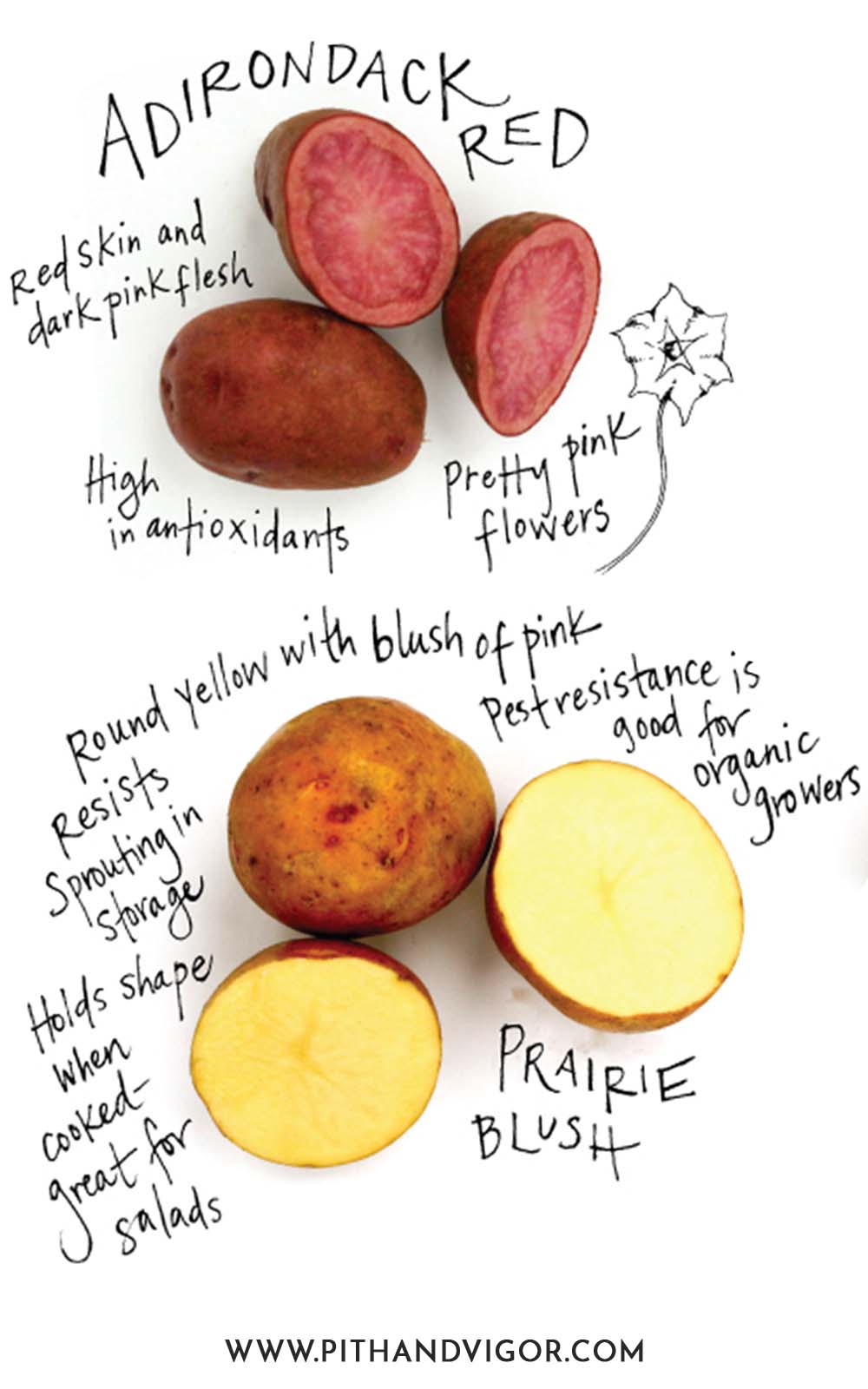
Adirondack Reds
- Red skin and dark pink flesh
- High in antioxidants
- Pretty pink flowers
Prairie Blush
- Round yellow tubers with a blush of pink
- Pest resistance is good for organic growers
- Resists sprouting in storage
- Holds shape when cooked making a great choice for salads

All Blue
- Soft moist flesh is perfect for au gratin recipes and sautéing.
- The blue pigment shields tubers from ultra violet light at high altitudes.
- Blue-fleshed potatoes, like kale and spinach, are high in vitamins and antioxidants.
King Harry
- King Harry is a round white Irish potato
- Bred at Cornell University
- Hairs on plant stems deter bugs
Fun Fact: Irish potatoes are not Irish – they are a type of white potato from the Andes of South America (where potatoes are native) that was brought to Europe in the 1500’s and which are also associated with the infamous potato-disease famine in Ireland.
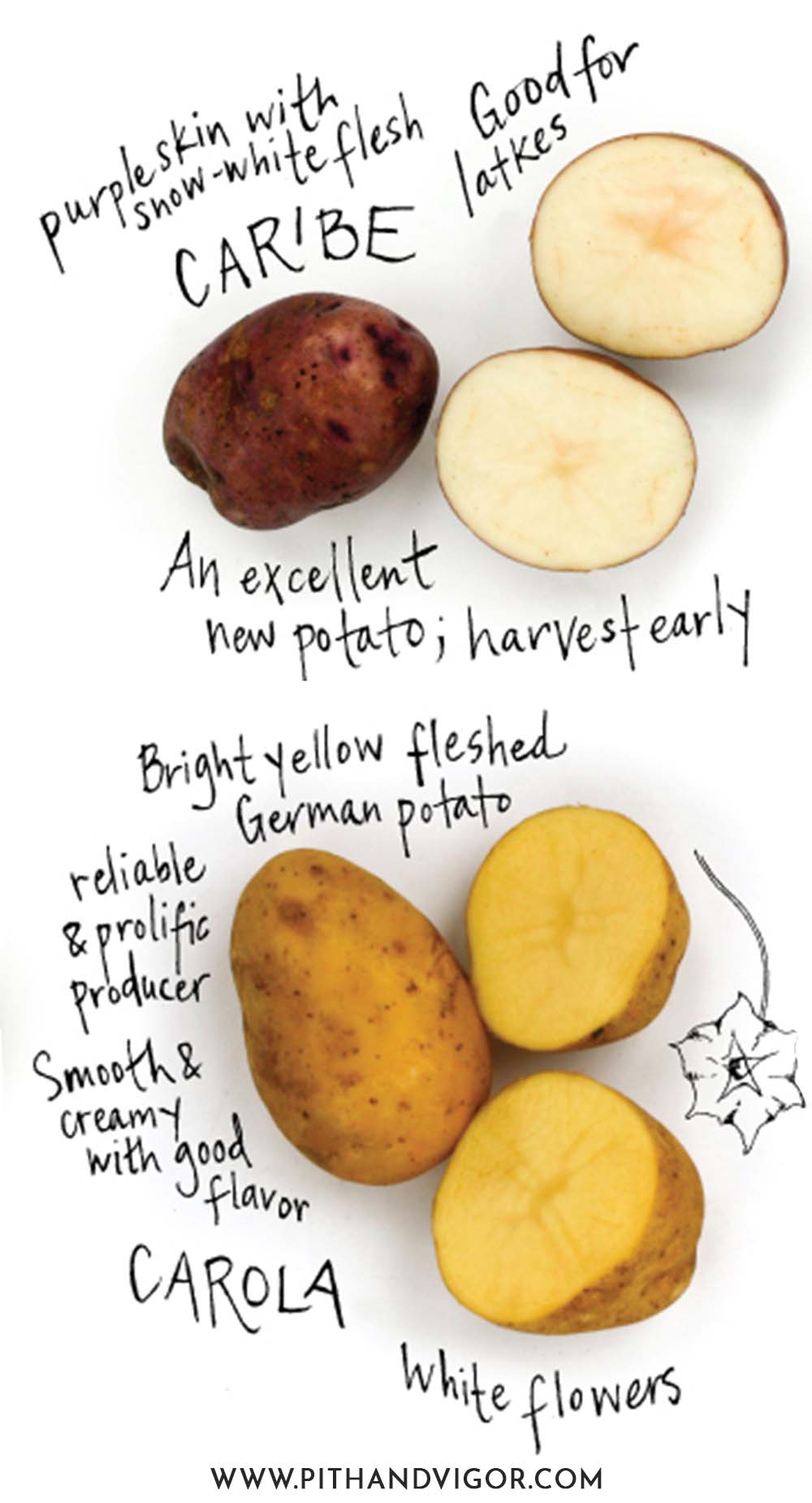
Carola
- Bright yellow fleshed German potato
- Reliable and prolific producer
- Smooth and creamy with good flavor
- White Flowers
Caribe
- Purple Skin with snow- white flesh
- Particularly good for latkes
- An excellent new potato; harvest early
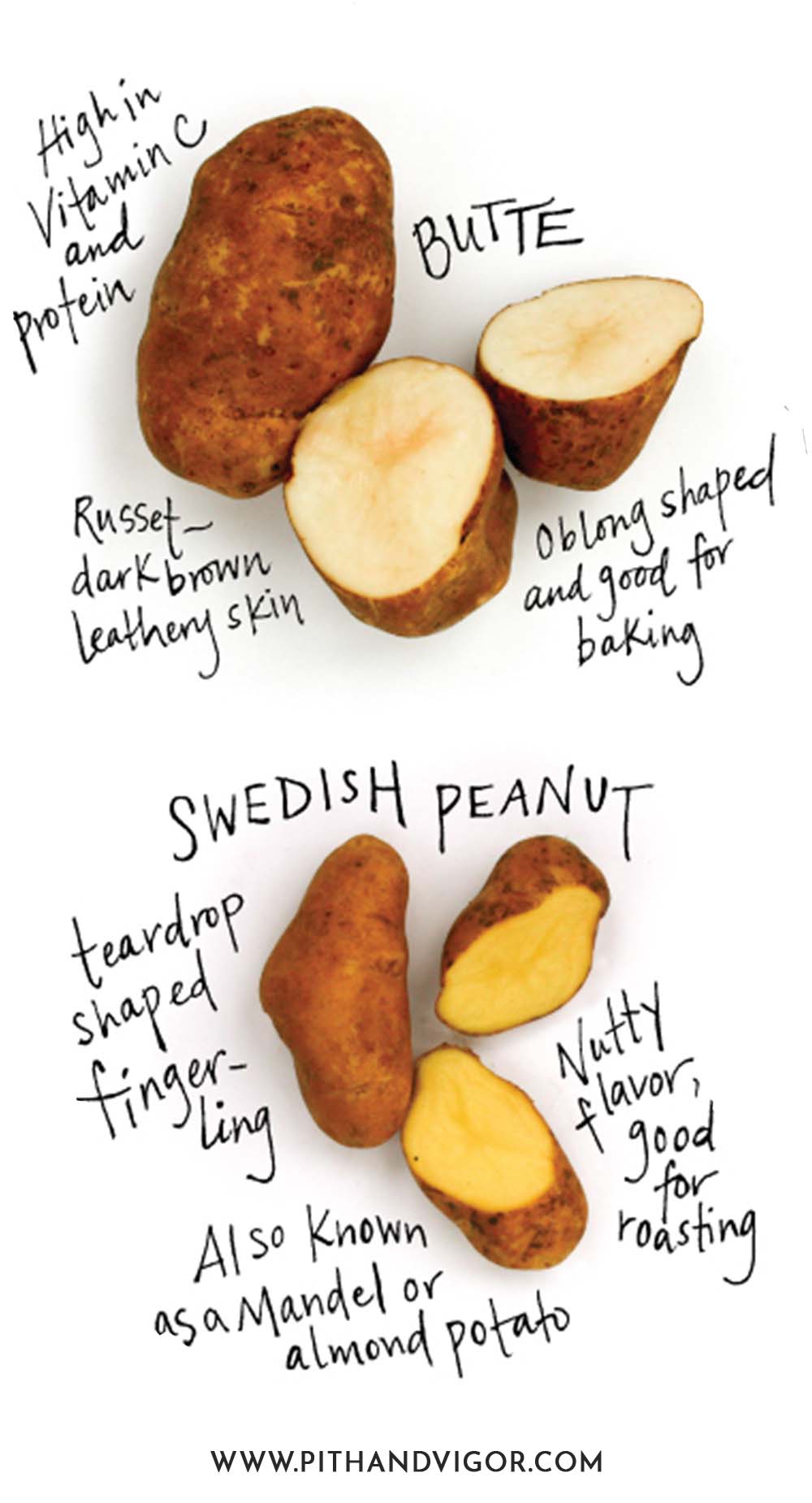
Swedish Peanut
- Tear drop shaped fingerling shaped
- Also known as a Mandel or almond potato
- Nutty flavor, good for roasting
Butte
- Russet – dark brown leathery skin
- Oblong shaped and good for baking
- High in Vitamin C and Protein
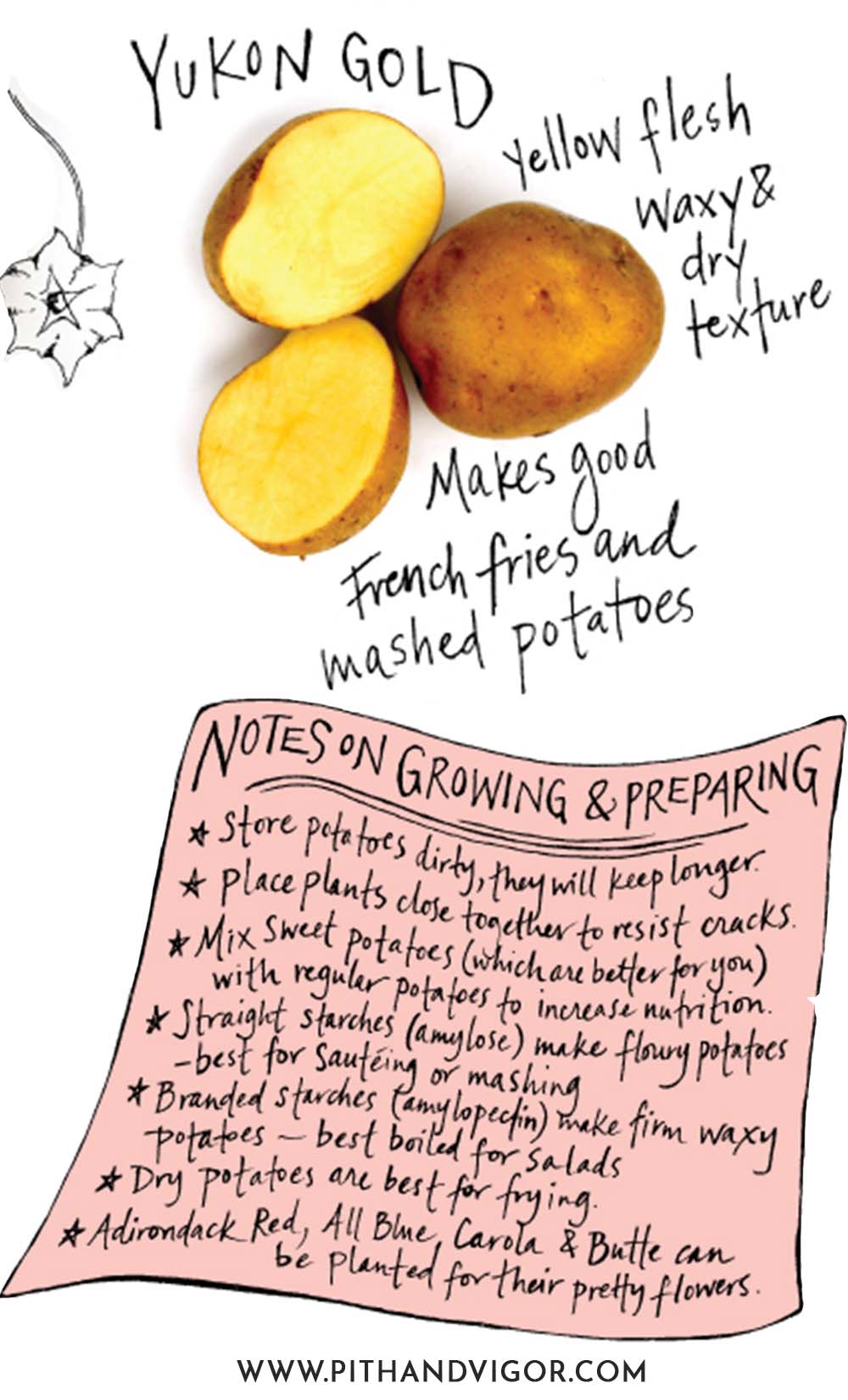
Yukon Gold
- Yellow Flesh
- Waxy and dry texture makes good French fries
- Makes the best mashed pots
Two other interesting types of potatoes that are good for northern gardeners.
Elba
- High yield and easy to grow
- Most resistant the late blight and least favorite of voles
Russian Banana
- Yellow, small, stubby heritage fingerling variety
- Grown by Russian settlers
Notes on growing and preparing homegrown potatoes
- Store potatoes dirty, they will keep longer
- Plant plants closer together to resist cracks
- Mix sweet potatoes (which are better for you) with regular potatoes to increase nutrition.
- Potatoes with more straight starches (amylose) will be floury – best for sautéing, mashing or steaming
- A potato with more branched starches (amylopectin) will be more firm and waxy – best for salads and boiled.
- Dry potatoes are best for frying.
- Adirondack Red, All blue, Carola and Butte can also be planted for their pretty flowers
Sweet Potatoes that can Grow in the North
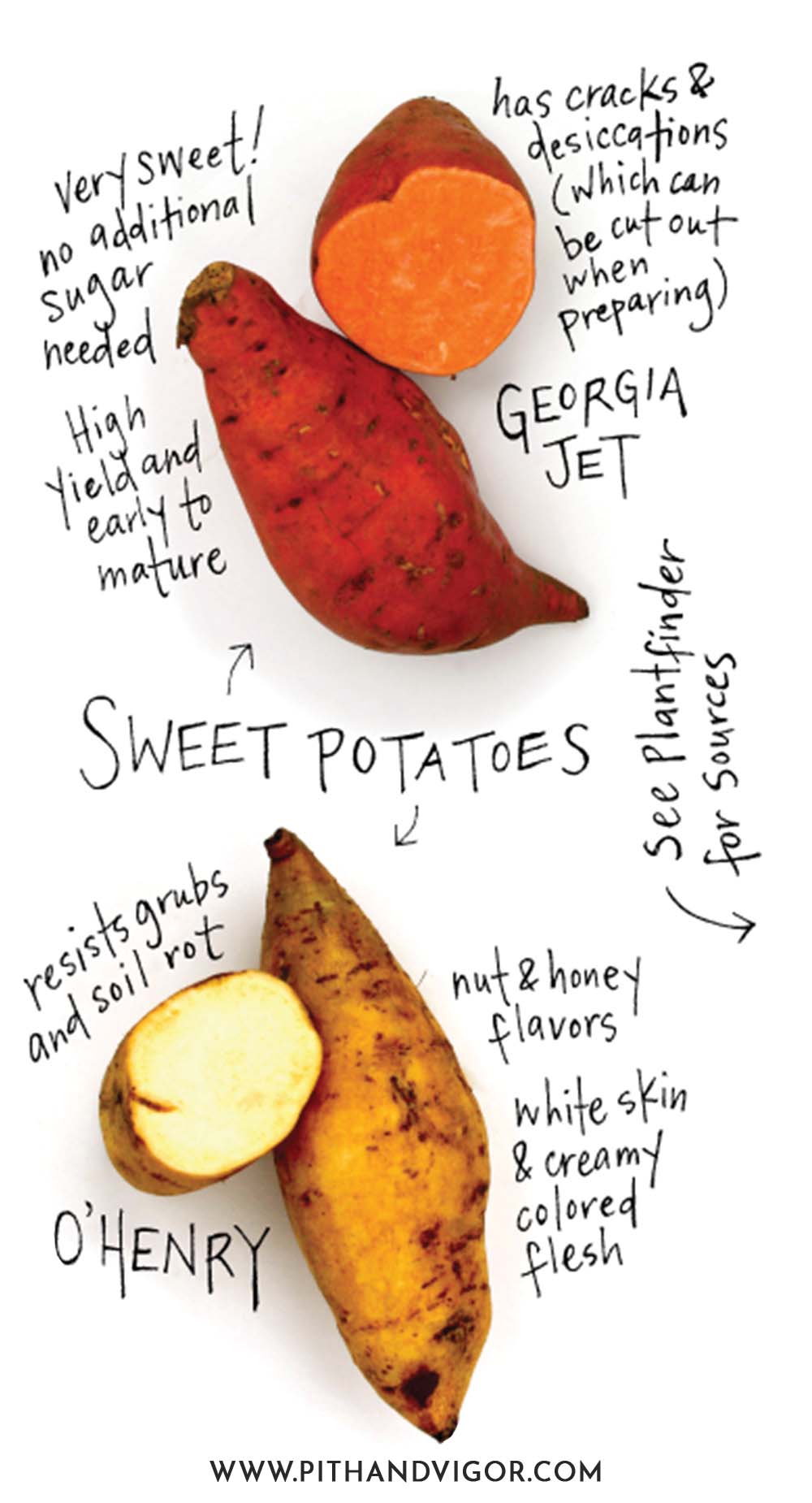
Sweet yams are tropical plants that are intolerant to cooler temps and they require longer period of growth (90-150 days to maturity) which can make them a challenge in the north. But if you want to give it try – these two varieties are your best options.
Georgia Jet
- Very sweet, no additional sugar needed
- High yield and early to mature
- Has cracks and desiccations (which can be cut out when preparing)
O’ Henry
- Nut and honey flavors
- White skin and creamy colored flesh
- Resists grubs and soil rot
Potato Texture Chart
| Amylose/ Amylopectin | Soft and Moist | Creamy and Mid-dry | Crumbly – Dry |
|---|---|---|---|
| Potatoes in this row have more straight starches (amylose). This makes for a more floury texture | Adirondack Red, All Blue | Carola | Butte |
| Potatoes in this row have more branched starches (amylopectin) for a more waxy and firm potato that holds together | Caribe, Elba, Prairie Blush, Russian Banana, King Harry | Yukon gold |
Where to find Spud starts to grow in your garden:
A variety of tubers (not including sweets) are available from Wood Prairie Farm – www.woodprairie.com
Also find seed potato varieties at
- High Mowing Seeds – www.highmowingseeds.com
- The Maine Potato Lady – www.mainepotatolady.com
- and Hudson Valley Seeds – www.hudsonvalleyseed.com
Sweet Potatoes
- Steele Plant Company LLC – www.sweetpotatoplant.com
Illustrated by: Samantha Dion Baker
+comments+